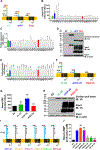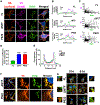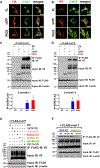Spatial regulation of GPR64/ADGRG2 signaling by β-arrestins and GPCR kinases
- PMID: 31502283
- PMCID: PMC7236788
- DOI: 10.1111/nyas.14227
Spatial regulation of GPR64/ADGRG2 signaling by β-arrestins and GPCR kinases
Abstract
Mechanisms of activation, signaling, and trafficking of adhesion G protein-coupled receptors (aGPCRs) have remained largely unknown. Several aGPCRs, including GPR56/ADGRG1 and GPR64/ADGRG2, show increased activity in the absence of their N-terminal fragment (NTF). This constitutive signaling is plausibly caused by the binding of extracellular N-terminal 15-25 amino acid-long tethered agonist to extracellular domains of the cognate aGPCRs. To test the role of NTF and tethered agonist in GPR64 signaling and endocytosis, we generated mutants that lack either NTF alone (ΔNTF) or NTF and tethered agonist (P622). We discover that unlike full-length GPR64, ΔNTF and P622 mutants interact with β-arrestin1 and β-arrestins2 and are constitutively internalized in steady states. However, only ΔNTF shows exaggerated basal activation of the Gαs -cAMP-CRE signaling cascade. Neither ΔNTF nor P622 shows constitutive activation of the Gα13 -SRE pathway, but both mutants respond to exogenously added agonistic peptide via CRE and SRE. GPCR kinases and dynamin mediate the constitutive internalization of ΔNTF and P622 to early endosomes, where ΔNTF constantly induces CRE. These data suggest that NTF not only shields the tethered agonist to prevent G protein signaling but also confers a conformation that inhibits the interaction with β-arrestins and the consequent endocytosis and sustained signaling from endosomes.
Keywords: G protein; GPCR kinase; adhesion GPCR; endocytosis.
© 2019 New York Academy of Sciences.
Conflict of interest statement
Competing interests
The authors declare no competing interests.
Figures







References
Publication types
MeSH terms
Substances
Grants and funding
LinkOut - more resources
Full Text Sources

